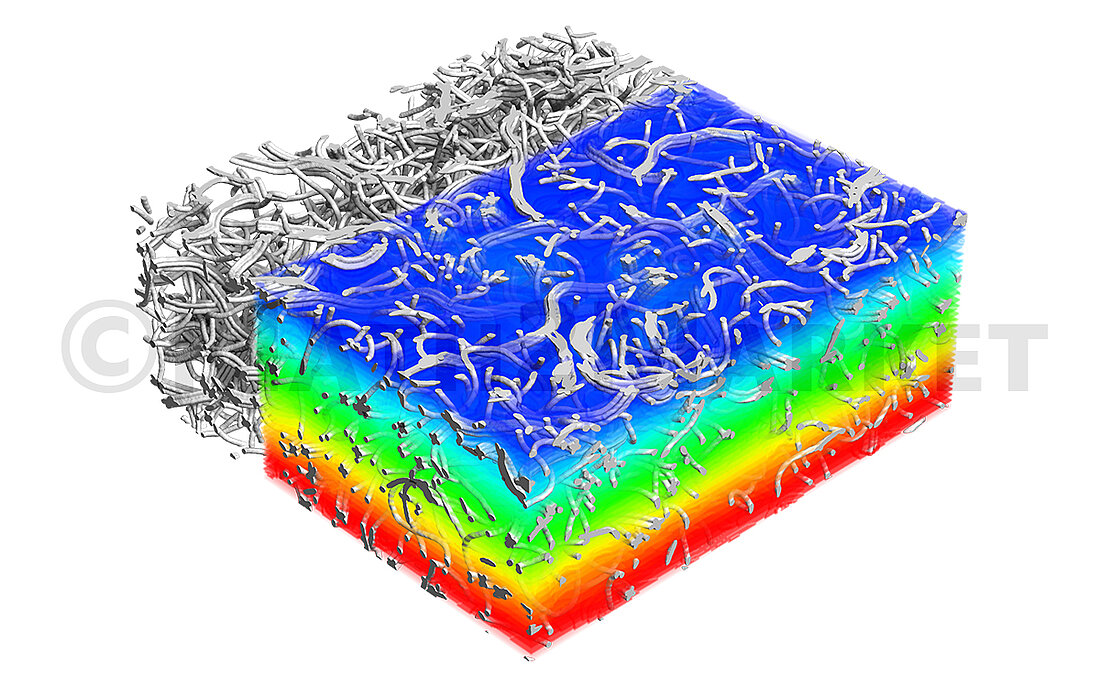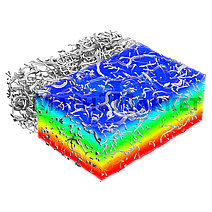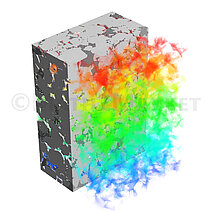Compute the Conductivity
ConductoDict
ConductoDict computes effective thermal and electrical conductivity of porous and composite materials.
Examples of Applications
Many industrial applications (e.g. thermal insulation, carbon nano-tubes) and research projects successfully use the ConductoDict algorithm, e.g.:
- Heat transfer properties of:
- medium density fiberboard (MDF) samples
- cast iron microstructures
- gas diffusion layer in fuel cells
- Electrical conductivity of Ag/SnO
- Electr. conductivity and formation factor of sandstones etc.
The following computation types can be selected in the GeoDict user interface:
Compute Thermal Conductivity - Compute the effective thermal conductivity. The thermal conductivity of the constituent materials and the direction(s) of conduction are user-defined. By solving one partial differential equation per direction of interest, the influence of the spatial distribution of these different heat conduction capacities on the overall heat conduction capacity of the composite material in the specified direction(s) of conduction. As output, ConductoDict assigns a single, effective heat conduction tensor to the whole data set.
Compute Electrical Conductivity - Compute the effective electrical conductivity from the electrical conductivity of the constituent materials.
| Tasks | Modules | |||
|---|---|---|---|---|
| Basic | GeoDict Base | |||
| Image Processing & Image Analysis | ImportGeo-Vol | |||
| Material Analysis | GrainFind(-AI) | FiberFind(-AI) | PoroDict + MatDict | |
| Modeling & Design | Application-relevant modules for creating and modeling 3D microstructure models in GeoDict [optional] | |||
| Simulation & Prediction | SatuDict | |||
| Integration & Automation | ExportGeo-Fluent | |||
Suitable modules depend on the concrete application.






